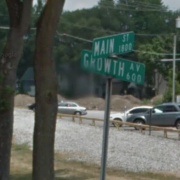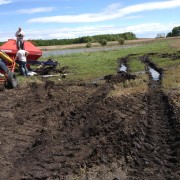Avenues to Growth – an Introduction
There are many tactics that can be implemented to achieve growth in your business. Listing them right off the hop would be meaningless, because first we must understand your goals.
What is it you are trying to achieve in business? Why are you in business? As Michael Gerber wrote in The E-Myth Revisited, “the problem is not that the owners of small businesses don’t work; the problem is that they’re doing the wrong work.” Gerber has built a career and a successful enterprise on breaking down why most small businesses fail. In my opinion, it is summed up nicely in what Gerber calls the Fatal Assumption.
The Fatal Assumption is: if you understand the technical work of a business, you understand the business that does the technical work. And the reason it’s fatal is it just isn’t true. The technical work of a business and a business that does that technical work are two totally different things!
Michael Gerber – The E-Myth Revisited, page 13
So, if the reason you’re in business is because you are an expert at the technical work being done in your business, you may be wondering why your dreams and aspirations of growth, wealth, and freedom haven’t transpired as imagined when you took the leap.
Business is complex. There are many facets to successful business, far more than simply “doing the work.”
Understanding that is the first step.
Asking for help is the second step.
Because if you are an expert at the technical work of your business, then is it likely you’ve struggled managing the business which does that technical work.
And growth has possibly eluded you…
Or, at least the potential for growth that your industry may present?
As a former bank lender, and having had several conversations with current bankers over the last half-dozen years since I left banking, the sentiments are the same. One banker was recently describing a client, who was a good client but could be so much better, by saying, “He builds a helluva road, but can’t manage his cash to save his life.”
Change the character to either he or she, and change the activity to almost any technical work. She/He:
- Builds a helluva road,
- Installs a helluva wiring system,
- Designs a helluva house,
- Welds a helluva bead,
- Grows a helluva crop,
…the list can go on and on.
Just doing the work will grow your business to a point, but that point is reached when you, as the owner/manager, run out of capacity.
Dr. David Kohl spoke recently in southern Saskatchewan. He described how success requires alignment of your expertise, your capacity, and your market.
Clearly, you have expertise or you would likely not be in business.
If you operate in a market that is hungry for your product or service, then growth is ready for the taking.
Is your capacity is sufficient in ALL areas that need to be covered in order to sustain growth: management, finance, reporting, staffing, logistics, facilities & equipment, etc?
(**Did you notice that facilities & equipment was found at the END of that list? That is symbolic.)
All too often, the “technician” owners put emphasis on the facilities & equipment because that’s where their expertise is found. It’s why the “technician” owners are more apt to fail. Getting additional equipment is the easy part; managing the cash flow, bankers, and staff is the hard part.
So in this Introduction to the “Avenues to Growth”, we have described that:
- You need alignment of your expertise, your capacity, and your marketplace;
- You need clarification of your reason for being in business; and
- You must define your business goals.
Plan for Prosperity
Over the coming weeks, we will be exploring the Avenues to Growth in greater detail. The explicit certainty in any growth plan is that growth must be intentional. Accidental growth or fortuitous growth is not sustainable unless the owners & management team conduct a postmortem on how and why the growth occured so that lessons can be learned, mistakes not repeated, and good decisions leveraged further in the future.
The other explicit certainty to growth: there are many avenues to get there, none are a straight line, and there is no “Easy Street.”
**The featured image is a screen shot from a Google street-view of Fort Wayne, Indiana. In a weird twist of irony, Growth Avenue in Fort Wayne is a dead end street.










